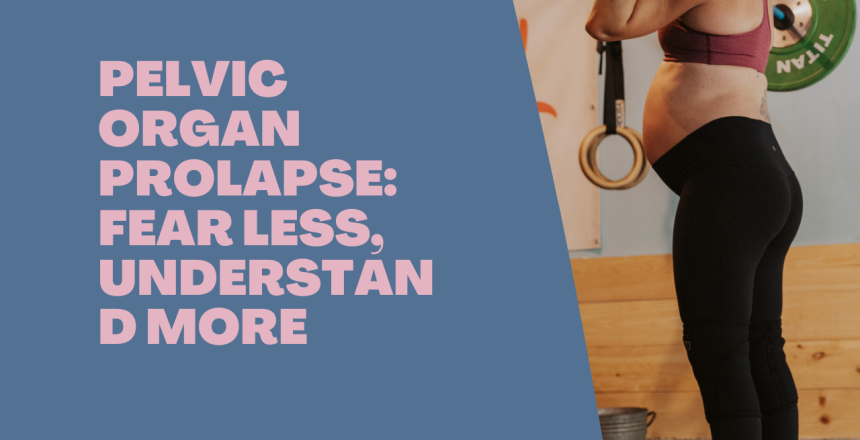
Pelvic organ prolapse (POP) might be one of the most misunderstood topics in pelvic health. A quick Google search can make it sound terrifying—like your organs are “falling out.” But for many active women, prolapse is less about fragility and more about understanding pressure, adaptation, and recovery.
At Barbell Mamas, we believe knowledge is strength. So let’s unpack what prolapse actually is, how it’s assessed, and what the evidence says about movement, lifting, and returning to the activities you love.
Pelvic organ prolapse refers to the descent of one or more pelvic organs toward the vaginal opening. That definition sounds dramatic—but it doesn’t mean your organs are falling out. It’s about increased pressure against the vaginal wall that creates a sense of heaviness or bulging.
Common symptoms include:
Many women describe it as “rolling over a golf ball” or “feeling a bulge,” but it’s important to note that these sensations don’t always match the degree of prolapse. You can have a “grade 3” prolapse and no symptoms—or a “grade 1” with significant discomfort. Symptoms—not grade—guide management.
During pregnancy and birth, the body stretches beyond anything most tissues ever experience. Just like stretch marks, changes in pelvic support are common and variable.
Some women have little to no change; others feel increased movement or heaviness. These are normal postpartum sensations, not necessarily signs of damage. Think of prolapse like a stretch mark: it’s a change in the tissue, not a sign that your body is broken.
Some risk factors are modifiable, others aren’t.
Non-modifiable: age, number of vaginal deliveries, instrument-assisted births (forceps), connective-tissue disorders (like Ehlers-Danlos).
Modifiable: obesity, chronic coughing or constipation, unmanaged high-impact training without gradual progression.
But the truth? Most cases are multifactorial. And research does not support the idea that lifting weights or returning to exercise “causes” prolapse.
Early studies found that people with heavy manual labor jobs (lifting all day, every day) had higher rates of prolapse. That data was mistakenly applied to athletes and gym-goers.
Recent research has shown no significant difference in prolapse symptoms between women who engage in strenuous sport and those who don’t. Exercise, when adapted to your body and symptoms, can actually support long-term pelvic health.
Here’s what matters more than load:
Movement is not the enemy—uninformed fear is.
Conservative care is the first line for most people:
Surgery may be considered for advanced prolapse (grade 4) or when symptoms severely affect quality of life. But even after surgery, rehab matters—pelvic health PT plays a key role in recovery and prevention.
Prolapse doesn’t mean you did anything wrong. It doesn’t mean you can’t lift, run, or chase athletic goals. It means your body has changed—and with guidance, strength, and smart progression, you can absolutely thrive.
If you’ve been afraid of movement, this is your invitation to reframe that story. Your pelvic floor is adaptable, your strength is not gone, and the conversation around prolapse is shifting—from one of fear to one of empowerment.
Key Takeaways

Christina Prevett is a pelvic floor physiotherapist who has a passion for helping women with different life transitions, including postpartum care and menopause.